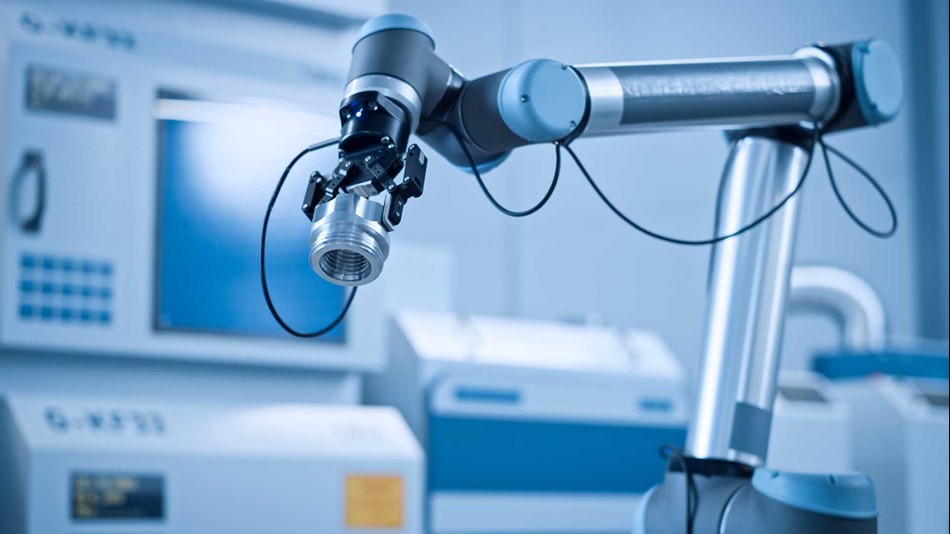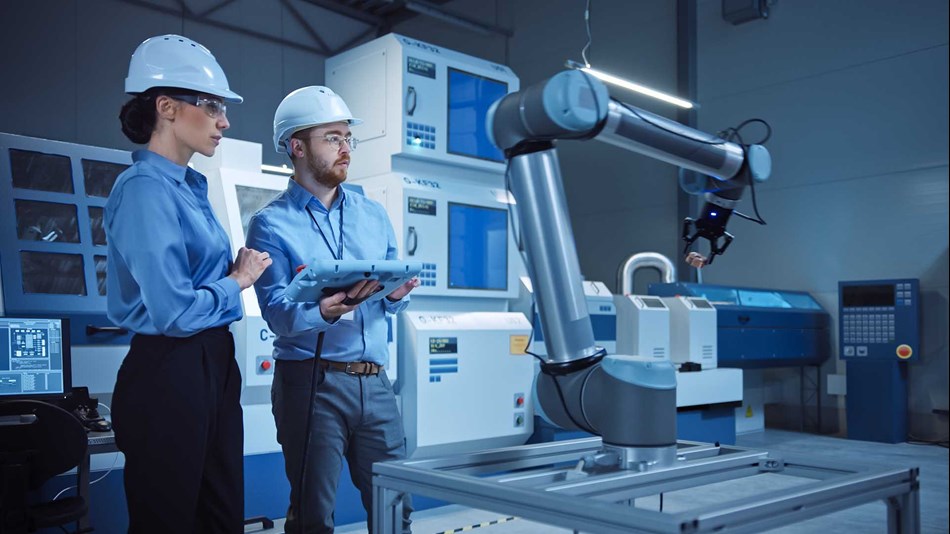Programming collaborative robots has never been easier!

When it comes to robot control programming, what comes to mind? Is it the process of writing complex lines of code that takes hours and can only be done by experienced experts?
The development of collaborative robots today has broken the stereotypes about industrial robot control programming. With the goal of developing machines that are both figuratively and literally friendly to humans, serving the production process. Today's collaborative robots are not only safe and harmless to humans, but also create simplicity for operators from the deployment, assembly, redeployment process to programming and control. So what makes collaborative robots superior to traditional industrial robots in programming and control? Let's find out.
DISADVANTAGES OF TRADITIONAL INDUSTRIAL ROBOT CONTROL PROGRAMMING.
While compact collaborative robots can be programmed simply by moving the robot arm directly to the desired location, traditional industrial robots are more difficult to program. The large size and bulk of traditional industrial robots often require more complex and time-consuming control programming, which sometimes requires experts with previous knowledge of robot control programming to be able to handle.
COLLABORATIVE ROBOT CONTROL PROGRAMMING - ELIMINATING THE DISADVANTAGES OF TRADITIONAL INDUSTRIAL ROBOT PROGRAMMING
One of the strengths of collaborative robot control programming is its simplicity and speed. There is no need to write complex codes as many people think, now the operator only needs to use the extremely intuitive robot arm control software integrated into the robot's teaching arm.

Operators with no experience in programming robotic arm control can also quickly get acquainted and complete this job well
Operators with no experience in programming robotic arms can quickly get up to speed and do the job well. The average training time for collaborative robot programming is only about 1.5 days.
At All Axis Machining, a metalworking and manufacturing company in Dallas, Texas, UR collaborative robots are used in applications such as machine tending and material finishing. The owner of this company was very proud to see his elderly employee at the product sanding stage able to operate and program the robot arm skillfully, helping to take over this heavy work right after completing the basic online courses from Universal Robots.

Collaborative robots can be easily programmed to help businesses reduce many costs
The ease with which collaborative robots can be programmed helps businesses reduce many costs such as deployment and operator training costs or downtime when programming robots for different tasks.
WAYS TO PROGRAM COLLABORATIVE ROBOTS

The UR collaborative robot arm can be programmed in a variety of ways
The UR collaborative robot arm can be programmed in a variety of ways depending on the complexity and requirements of each application. Most UR collaborative robots are considered easy to program. Some ways to program and control the UR collaborative robot include:
- Using a touch-sensitive teaching arm with easy-to-use 3D visualization robot arm control software. The collaborative robot comes with a teaching arm to control and program the robot arm. The teaching arm is a touch screen with extremely intuitive 3D software, helping to set up the robot's operations accurately. The operator can control the robot to move to the desired positions using the arrow keys on the software or set parameters and coordinates so that the robot can reach the desired position. The UR collaborative robot teaching arm can be quickly familiarized and used proficiently.

UR collaborative robot trainer can be familiarized and used quickly
- Visual simulation programming and testing of various simulations. Operators can use robot arm control simulation software to simulate various robot movements before applying them to actual robots.
- Directly move the robot to the desired positions. This is one of the strengths of collaborative robots and is one of the simplest, fastest, most intuitive and frequently applied methods in manufacturing facilities. Operators can directly move the collaborative robot arm to the desired positions by hand, save that position on the robot's teaching hand and then they can perform operations at that exact position without spending too much time and effort.

Directly moving the robot arm to the desired position is the simplest way to program the control of a collaborative robot arm
RICH ROBOT PROGRAMMING LEARNING RESOURCES
Universal Robots is now offering free online courses at UR Academy. With over 100,000 students from over 130 countries, UR Academy has helped robot operators from cobot beginners to experts learn the basics or improve their skills in programming and deploying UR collaborative robots.
In addition, robot operators can also learn directly from automation experts from over 60 teaching centers around the world. Want to improve your collaborative robot programming skills so you can redeploy your robots for many other applications?
Article source:universal-robots.com
